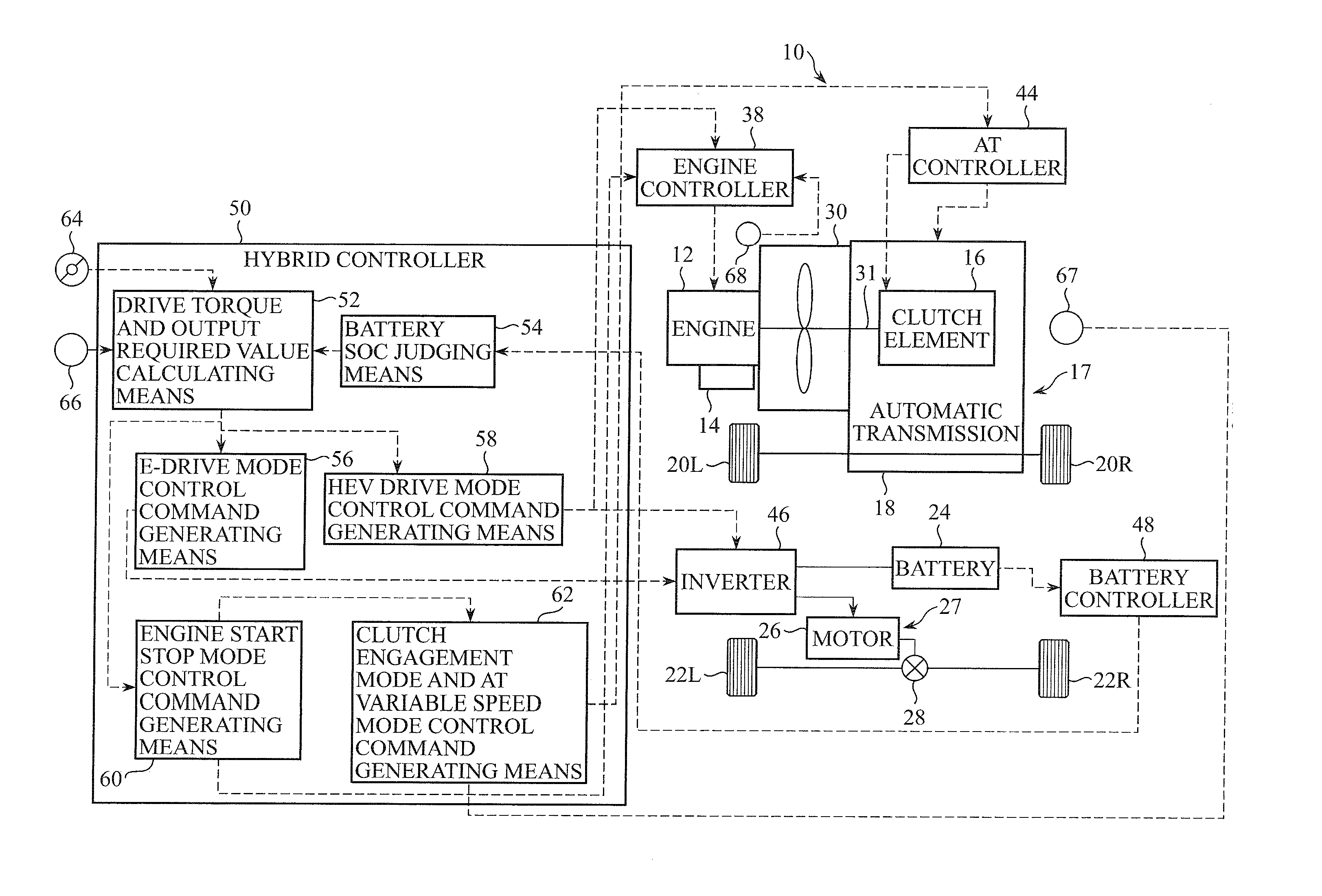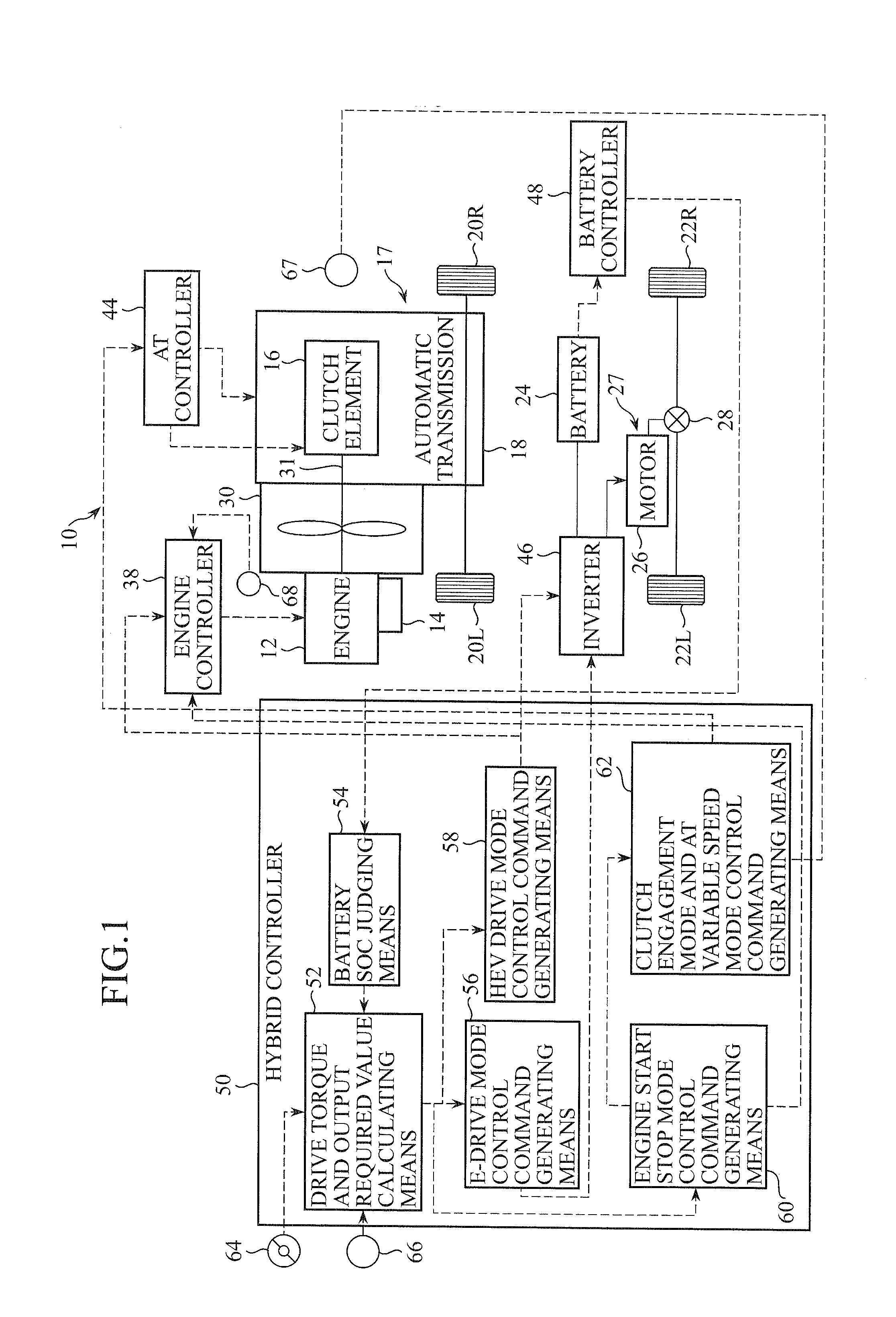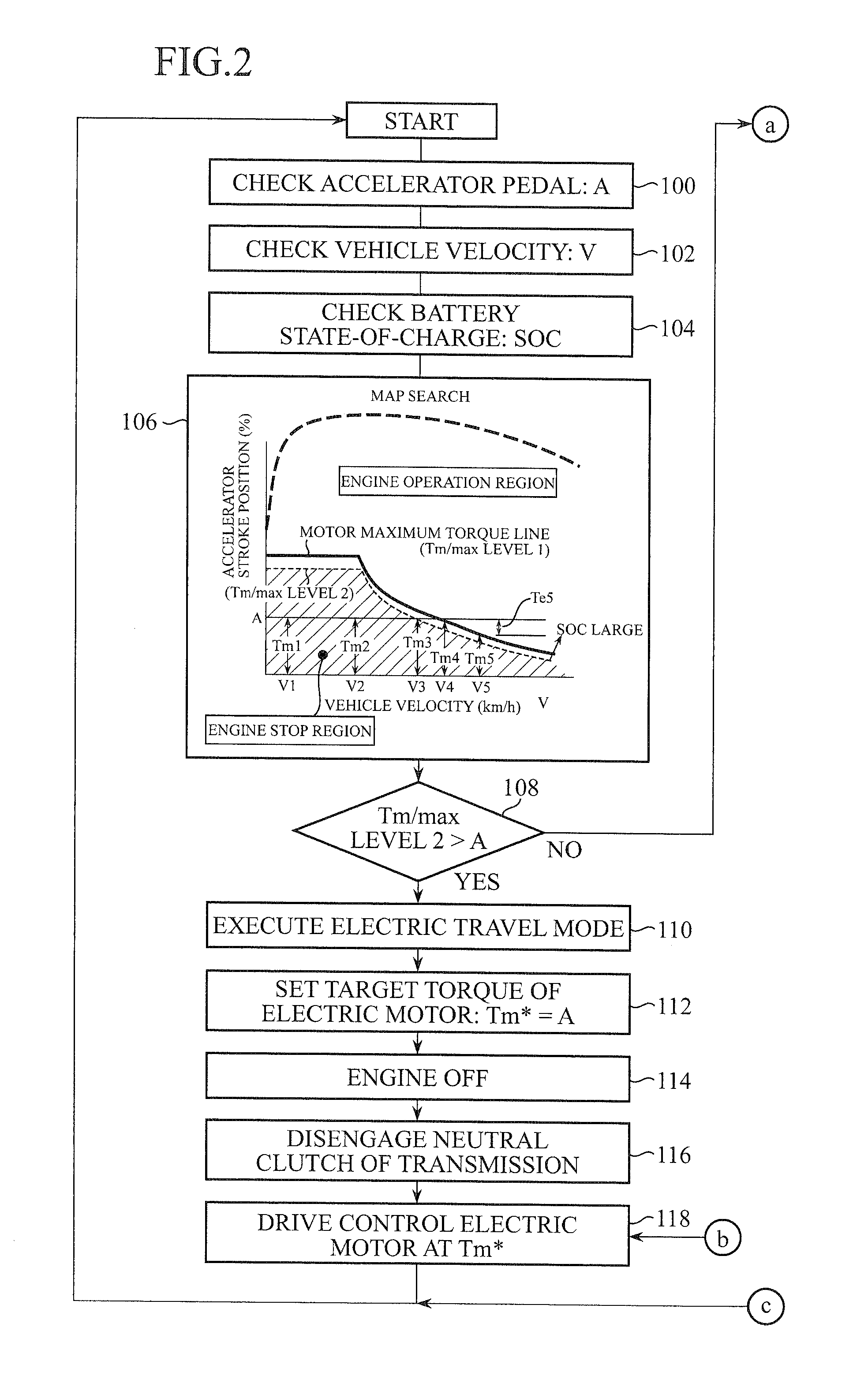Hybrid system control method
a hybrid system and control method technology, applied in process and machine control, battery/fuel cell control arrangement, instruments, etc., can solve problems such as inability to reduce shock, and achieve the effect of reducing reducing the shock when changing the clutch element to the forward sta
- Summary
- Abstract
- Description
- Claims
- Application Information
AI Technical Summary
Benefits of technology
Problems solved by technology
Method used
Image
Examples
Embodiment Construction
[0056]Embodiment of the present invention will be described below with reference to the drawings.
[0057]In FIG. 1, there are shown a vehicle 10 to which a hybrid system control method pertaining to a first embodiment of the present invention is applied and a control system of the vehicle 10 that enables control of the hybrid system. The vehicle 10 is a four-wheel drive hybrid vehicle where an electric axle unit is placed on a driven wheel axle of an existing two-wheel drive vehicle and which is configured by minimum vehicle alteration, and the vehicle 10 is equipped with an internal combustion engine 12, a starter motor 14 for starting up the engine 12, a first drive system 17 for transmitting drive force of the internal combustion engine to an axle of front wheels 20L and 20R, a battery 24, and a second drive system 27 for supplying electric power to an axle of rear wheels 22L and 22R.
[0058]The first drive system 17 is equipped with a torque converter 30 and an automatic variable sp...
PUM
 Login to View More
Login to View More Abstract
Description
Claims
Application Information
 Login to View More
Login to View More - R&D
- Intellectual Property
- Life Sciences
- Materials
- Tech Scout
- Unparalleled Data Quality
- Higher Quality Content
- 60% Fewer Hallucinations
Browse by: Latest US Patents, China's latest patents, Technical Efficacy Thesaurus, Application Domain, Technology Topic, Popular Technical Reports.
© 2025 PatSnap. All rights reserved.Legal|Privacy policy|Modern Slavery Act Transparency Statement|Sitemap|About US| Contact US: help@patsnap.com



